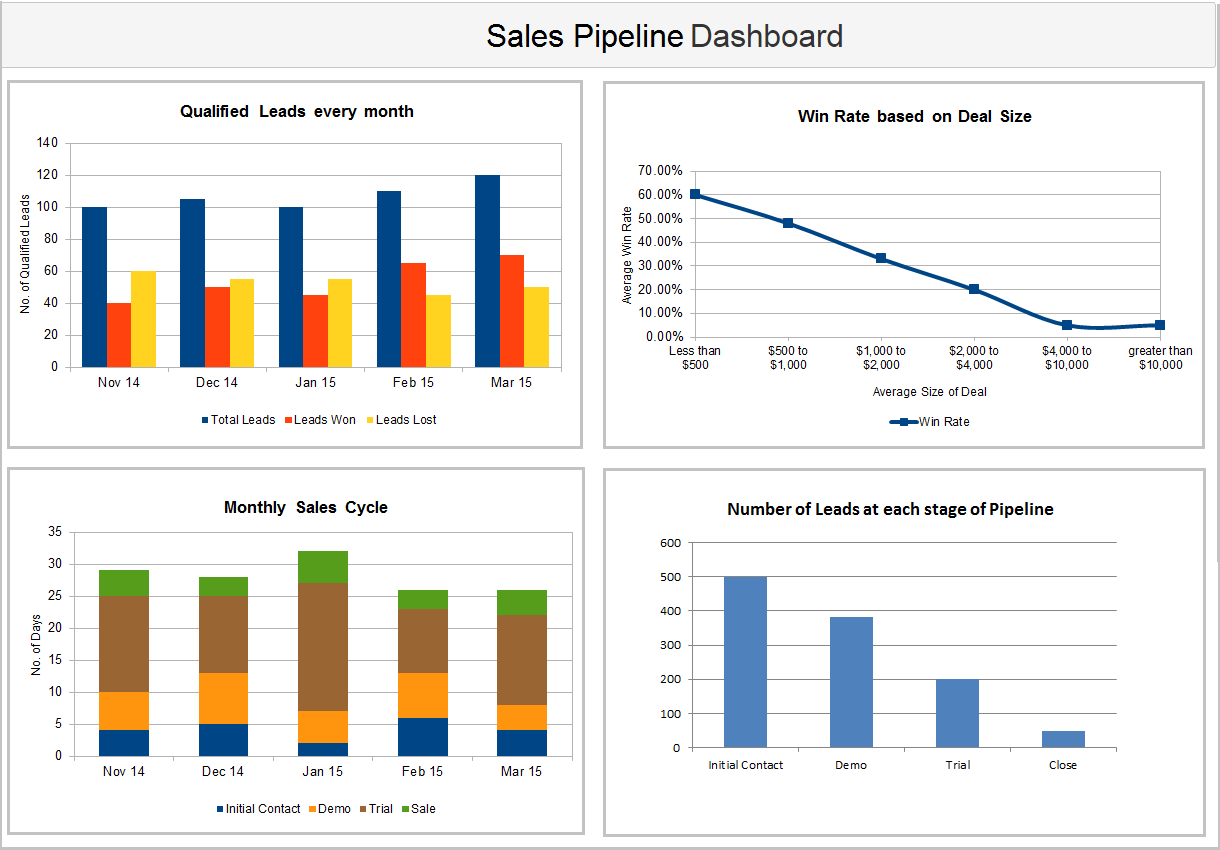How quickly do leads move through your sales pipeline to close deals? Every sales manager knows that the longer a deal stays in the pipeline, the less likely it will close. Knowing the total value of your pipeline is not enough. You also need to know how quickly those opportunities will go through each stage of the buying process and turn into actual revenue. By monitoring your pipeline velocity, you will be able to predict future sales more accurately.
Here are 4 key metrics that you can measure and improve to boost your sales pipeline velocity:
1. Qualified Leads
Qualified leads are the leads who have gone a step beyond contacting you and demonstrated some interest in buying your product (by signing up, requesting a quote, scheduling a demo, etc.). I t is an important factor that impacts pipeline velocity. Only a fraction of it make it through the pipeline and close the deal. So, the more qualified leads you generate, the better it is for your business.
You can monitor this metric every month to see how it has grown over time due to your lead generation tactics & marketing efforts. Ideally, it should constantly increase over time. If this metric isn’t where you’d like it to be, it’s time to focus more on marketing and drive more lead creation. You can also break out lead volume into qualified leads by each source to find out which sources are the most effective ways of generating leads.
2. Win Rate
Win Rate is the percentage of leads that convert to actual sales. Customer journeys are complex and involve some amount of churn at almost every stage. By monitoring win rate at each stage, your team will be in a position to close more deals.
The key here is to identify common points where prospects drop off and work with your team to address the reasons why, to figure out what your team can do to improve the path from initial contact to sale. Once you know the total win rate, you can go deeper to look at the conversion rate at each stage of your pipeline. This can help you identify areas that need more training & resources, increase conversion rates and improve your lead velocity as well.
You can even break out win rate by various channels/sources that you use to generate leads. Comparing win rate across channels enables you to see how effectively each source is generating qualified leads. Using win rate along with lead volume can give a clear idea of how each channel impacts your revenues.
3. Deal Size
The average value of won deal is another metric that impacts the velocity of your sales pipeline. Generally, larger deals move more slowly through the pipeline while smaller deals move quickly. By looking at the past deals won by your sales team, you can easily find out the average deal size you have had most success closing. This can help your team target opportunities that are more likely to close and to increase your average win rate.
4. Sales Cycle Length
Sales Cycle Length is the amount of time it takes for a lead to move from the initial contact to a sale. If it takes your team too long to move leads through the various stages of your pipeline, this can adversely affect pipeline velocity.
When time to close is short, you can identify what steps you had taken and try to repeat it. When it is particularly long you can spot such leads beforehand and do something about them. Such leads may have some specific requirements, which you can proactively fulfill early on to shorten the sales cycle. It may also be because your sales reps need more training in certain stages of your pipeline. By coaching your reps, you can enable them to shorten each stage of your sales cycle and increase your pipeline velocity.
Initially, you can create a simple sales dashboard to regularly monitor all the stages of your pipeline and share it with your team. Monitoring it daily/weekly will tell you how your marketing efforts and lead generation tactics are performing. You can add more metrics to it as you feel the need to track more information.
Regularly monitoring each stage of your pipeline will enable you to identify the bottlenecks and fix them quickly. It will also help you understand in which areas you need to provide additional training to sales reps.
There are three fundamental things you can do to improve your pipeline valocity: generate more qualified leads, shorten your average sales cycle, or increase your average sales win rate. Improving any one factor will bring obvious benefits. But methodically improving all three factors will have a powerful multiplier effect on your sales performance — and dramatically improve your revenue predictability.
Read more: The Cost and Cures for Inside Sales Turnover

